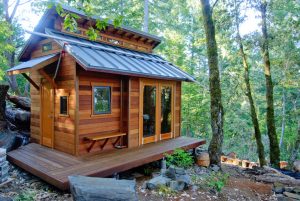 The tiny house movement is rapidly gathering momentum. Reduced bills, small to no mortgage payments, and a simpler way of life are all major draw cards of extreme downsizing.
The tiny house movement is rapidly gathering momentum. Reduced bills, small to no mortgage payments, and a simpler way of life are all major draw cards of extreme downsizing.
Before you start building, the one thing you must know is where you’re going to put your tiny house as different laws apply to different locations.
Here’s a breakdown of the three placement options, and which rules apply to each:
1.Setting Up In A Backyard
A tiny house on the same lot as a ‘main dwelling’ can be classified as a granny flat. Granny flats have their own size and structure regulations (set by the local council).
While you’ll need to get a granny flat approved by a private certifier, you won’t necessarily have to get council approval, which is a huge advantage of choosing this option.
Just be careful that the combined number of occupants in the tiny house and main property doesn’t exceed the local council’s limits. In Brisbane, for example, only five unrelated people are allowed to dwell on the same lot!
2. Using A Vacant Lot
If you build your tiny house on a vacant lot, you’ll need to have your construction approved by the local council. This means you’ll have to conform to the building codes that apply to regular houses including minimum sizes, smoke alarm rules, plumbing and electrical standards and more.
You can find these codes the Building Act of 1975, or, better yet, get a lawyer to inform and review your plans.
3. Tiny Houses on Wheels
Many tiny house enthusiasts build their homes on wheels, so that they can vacate the jurisdiction of city and town planning authorities at a moment’s notice.
The catch is, of course, that once your home has wheels it is no longer a “permanent structure” and instead is classified as a caravan or light truck.
No matter where you roam in Australia, you’ll need to comply with the Motor Vehicle Standards Act 1989.
In addition to this, you’ll need to comply with state laws relating to movable dwellings. In Queensland, these include the Residential Tenancies and Rooming Accommodation Act 2008 and the Transport Operations (Road Use Management) Act 1995.
You’ll save time and money in the long run if you seek legal advice before you build and ensure your home is the right shape, size and weight and that you’re meeting safety requirements (e.g., fire extinguisher installation).







